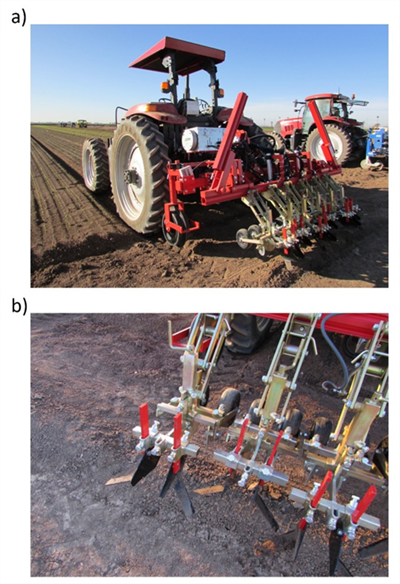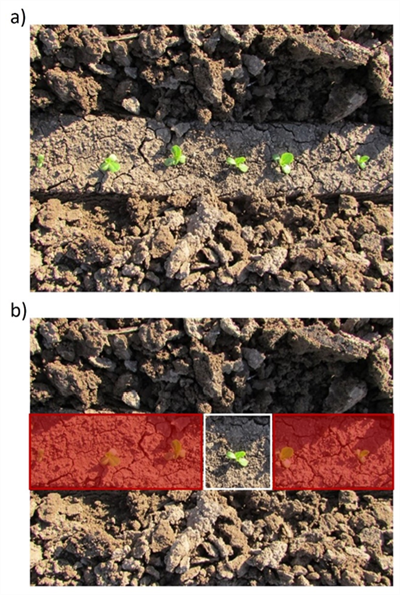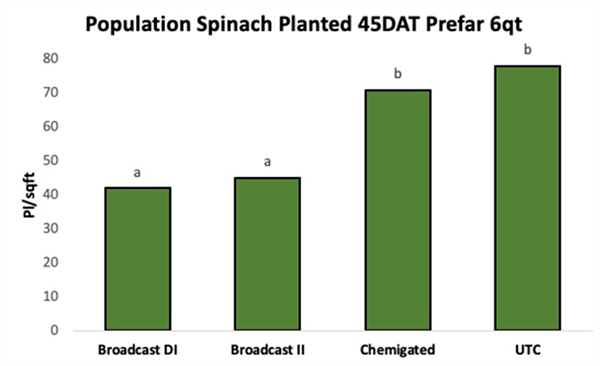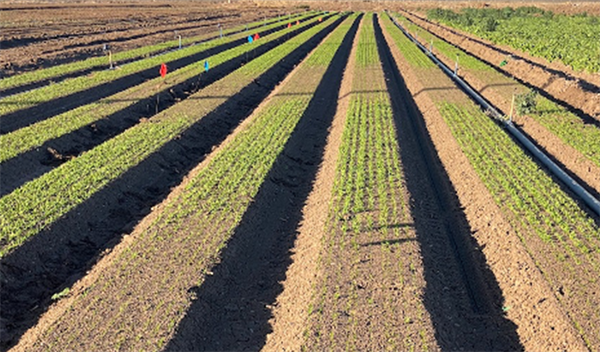Dec 14, 2022
Water Shortages and Crop Water Management
After more than 22 years of severe drought, watersheds across western North America are experiencing critical water levels that threaten agricultural and domestic supplies. The Colorado River shortage is emblematic of these shortages.
These external factors are significantly impacting crop production systems at the field level in the desert Southwest. Irrigation districts in central Arizona, particularly Pinal County, have lost access to Colorado River water allocations via the Central Arizona Project because of Tier 1 and Tier 2a reductions from the Drought Contingency Plan. Reductions have also been imposed on Nevada and Mexico allocations. Water levels in Lakes Powell and Mead are at less than 25% capacity and continue to decline due to insufficient action to arrest this worsening situation.
Since diversions to agriculture represent approximately 80% of the Colorado River water use, the basic arithmetic on the balancing of the river’s water budget will depend significantly on how agricultural diversions are ultimately managed in the process. Further reductions of Colorado River water diversions to agricultural districts seems rather inevitable but many uncertainties remain with discussions and negotiations ongoing.
Water is the first and most limiting agronomic factor in crop production. To deal with these challenging conditions from the water shortages at the field level agronomically, the crop and soil factors, there are some fundamentals that we can refer to for assistance.
Dr. Jeremy Weiss, program manager for the University of Arizona AZMET system, has recently developed a valuable tool that provides actual crop evapotranspiration (ETc) estimates from several AZMET sites in the lower Colorado River Valley and for several key vegetable crops, including lettuce (iceberg and romaine), broccoli, cauliflower, cabbage, and spinach. Accumulations of ETc values over the previous week and a range of dates are shown based on a date of planting, which is selected by the user. In this model, the Kc values presented in FAO-56 are used for appropriate stages with each crop. The reference evapotranspiration (ETo) measurements are taken directly from each AZMET site listed.
To access this crop-water estimate tool please refer to the following link:
https://viz.datascience.arizona.edu/azmet/azmet-crop-water-use-estimates/
For example, using lettuce (either iceberg or romaine) with a 1 November planting date through 11 December, we can see from this model the reference evaporation, listed as “water use” (ETo) and the cumulative crop evapotranspiration (ETc, or total crop-water use) of lettuce since the selected planting date.
Since planting on 1 November through 11 December, a total crop water use, or the ETc, has been 3.57 inches in the Yuma Valley. Last week, from 5-11 December, ETc has been 0.56 inches in the Yuma Valley.
Similar estimates are provided by this model for several AZMET weather stations in the Yuma production area: Roll, Yuma North Gila, Yuma South, and the Yuma Valley. The Yuma Valley station is at the University of Arizona Yuma Agricultural Center and the Yuma South site is near Somerton, Arizona. A map of AZMET sites can be found in the following link:
https://ag.arizona.edu/azmet/mapsites.htm
When we include the leaching requirement for the crop, an overall estimate of field level irrigation efficiency can be made. We can estimate the leaching requirement as follows assuming an electrical conductivity for Colorado River water of 1.1 dS/m and the lettuce crop salinity tolerance of 1.3 dS/m.
Leaching Requirement (LR) = ECw/((5 X ECe)-ECw)
LR = 1.1 dS/m / (5 X 1.3) – 1.1 = 1.1/5.4 = 0.20 = 20% leaching requirement
LR = 9.8 X 0.2 = 1.96 ~ 2 inches
Thus, total crop water demand in this case = 10 + 2 = 12 inches total
Contrasting this estimate of total crop-water use with the amount of irrigation water that was applied to the field can provide an estimate of the agronomic efficiency for a given field of lettuce. We can do the same thing using this tool for other primary leafy green vegetable crops.
We are working in times of decreasing water availability and increasing scrutiny in agriculture. It serves us well to measure and understand the relationship between crop demand (consumptive use plus leaching requirements) versus the irrigation water that is applied to a given field.














